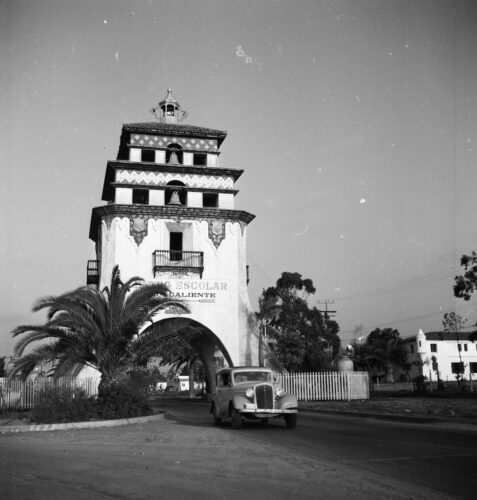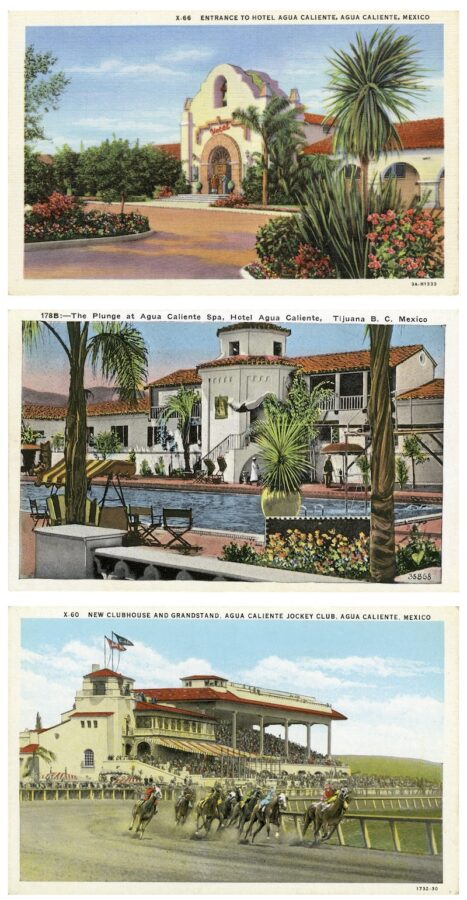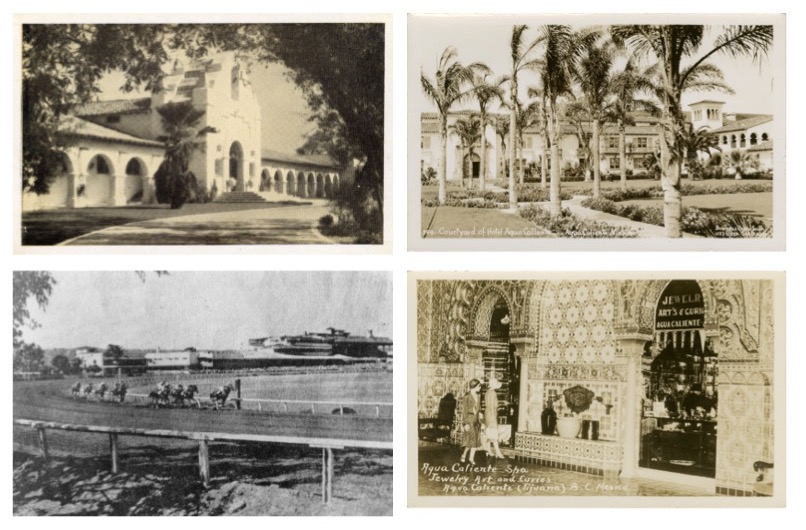
Nestled in the vibrant city of Tijuana, the Agua Caliente Casino stands as a testament to the city’s rich cultural and social tapestry. Its story is one of glamour, daring, and transformation, reflecting both the highs and lows of the American and Mexican experience of Tijuana in the 20th century.
The Birth of a Legend
In the 1920s a road was built from Tijuana’s historic Zoa Río neighborhood up to the well-known hot springs in Tijuana (agua caliente translates to hot water in English). In the late 1920s, a group of American sports promoters built the Agua Caliente hotel, casino, racetrack, and golf course (known collectively as the Agua Caliente Tourist Complex) along Agua Caliente Boulevard. Agua Caliente quickly became a symbol of glamour and sophistication, drawing visitors from both sides of the border.
Named for the medicinal hot springs, the Agua Caliente resort complex included a therapeutic pool and spa, but the main chief attractions for wealthy Americans were the luxurious gambling casino, the racetrack, and the elegant full-service cocktail bars—all things that were illegal in the U.S. during the age of prohibition. The hotel’s 300 guest rooms, private bungalows, gardens and superb food guaranteed its popularity as a Hollywood getaway.
The racetrack’s grand opening was a lavish affair, featuring a blend of high society and Hollywood glitz. Tijuana, already known for its vibrant nightlife and liberal attitude, now had a racetrack that offered both thrilling horse races and upscale entertainment. It wasn’t long before Agua Caliente became a hotspot for celebrities, gamblers, and socialites alike.

The Golden Era
During the 1930s and 1940s, Agua Caliente Racetrack reached the zenith of its popularity. The racetrack was renowned for its spectacular races, attracting top horses and jockeys from around the world. Agua Caliente became synonymous with an era of extravagance and excess, representing a playground where the wealthy and famous could indulge in their desires freely. Over the years, Hollywood elite such as Charlie Chapman, Jack Dempsey, Jean Harlow, Marlene Deitrich, Ginger Rogers, and Frank Sinatra enjoyed the social scene there. Agua Caliente was even responsible for the discovery of a movie star. A young woman named Margarita Cansino who would perform with her father at the casino was “discovered” by a Fox Studios executive and came to Hollywood where she eventually became famous as Rita Hayworth.
The Decline and Resurgence
The 1950s and 1960s brought changes to both Tijuana and Agua Caliente. As American attitudes shifted and travel restrictions tightened, the once-bustling racetrack began to experience a decline. The allure of the racetrack was overshadowed by changing tastes and the rise of other forms of entertainment.
In the 1970s, the Agua Caliente Racetrack faced further challenges. The building suffered from neglect, and the track fell into disrepair. Despite efforts to revive it, the racetrack was ultimately closed in 1974. The site of the once-glamorous racetrack fell into obscurity, and its legacy seemed to be fading.
However, the spirit of Agua Caliente was not easily extinguished. In the late 1990s, there were renewed efforts to restore and honor the racetrack’s historic significance. Horse racing was replaced by greyhound racing, which continued for decades until just this last summer when it finally ended, bringing the racing history of Agua Caliente to a close.
A Lasting Legacy
Today, the Agua Caliente Racetrack remains an iconic symbol of Tijuana’s rich history. Although the original racetrack no longer operates, its legacy endures through various cultural and historical projects. Efforts to commemorate the racetrack’s history include exhibitions and historical documentation, celebrating its role in the city’s vibrant past.
The Agua Caliente Racetrack is remembered not just for its races, but for its role in defining an era of opulence and freedom. It represents a unique chapter in the history of cross-border entertainment and remains a symbol of the dynamic relationship between the United States and Mexico. It stands as a reminder of a time when Tijuana was at the forefront of high society and entertainment, and its history continues to captivate those who look back on this fascinating history of Agua Caliente and wonder what the future holds.


SOME OF MY FONDEST MEMORIES are from Caliente Race Track. Had soooo much fun their back in the mid to late 70’s. Thank you Gary Cooper!!